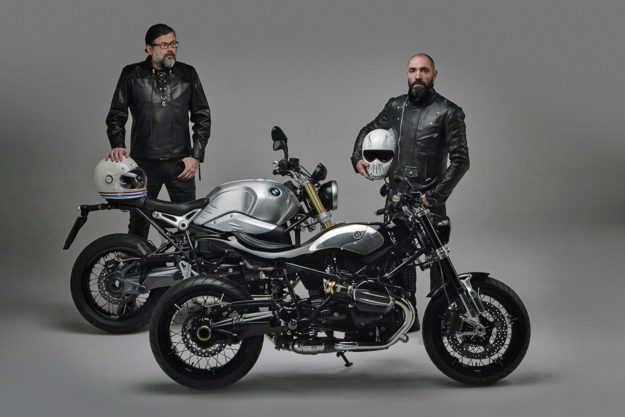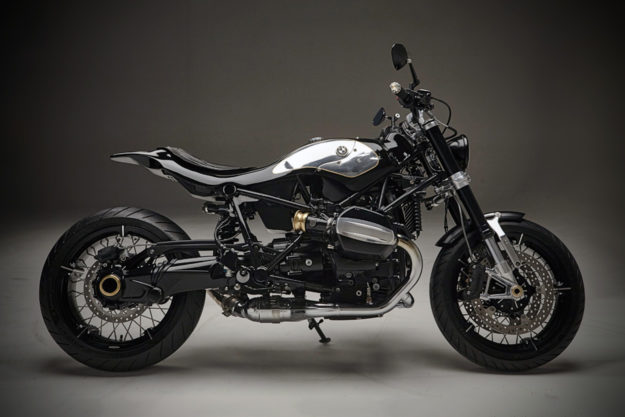
When the R nineT was on the drawing board, BMW engineers made sure it was easy to modify. And that custom-friendliness has become a core part of the bike’s ethos.
This Italian build takes that principle and rides away with it, and the unusually slim, tracker-inspired vibe makes it a real attention grabber.
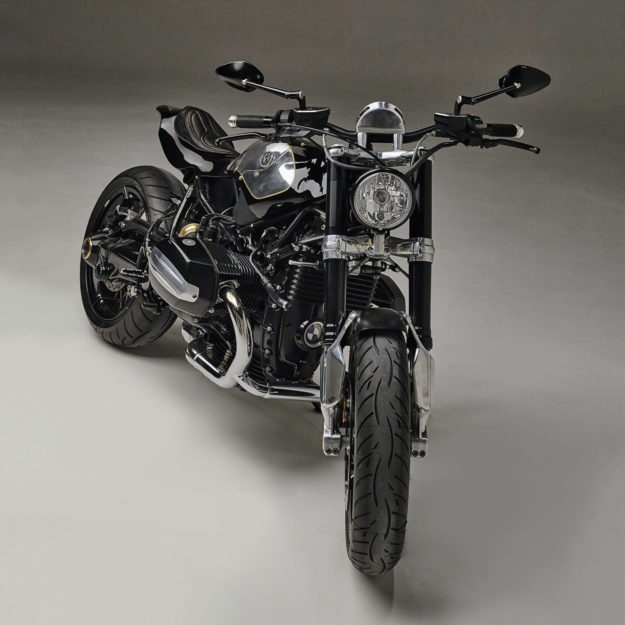
Most Motorradfahrer these days are aware of the R nineT’s modular nature, but even BMW themselves probably wouldn’t have envisioned the transformation this team of passionate Italian builders has wrought.
Led by Giuseppe Roncen of LowRide magazine, a bunch of talented builders have torn into and restyled a 2016 R nineT sourced from BMW Motorrad Italy.
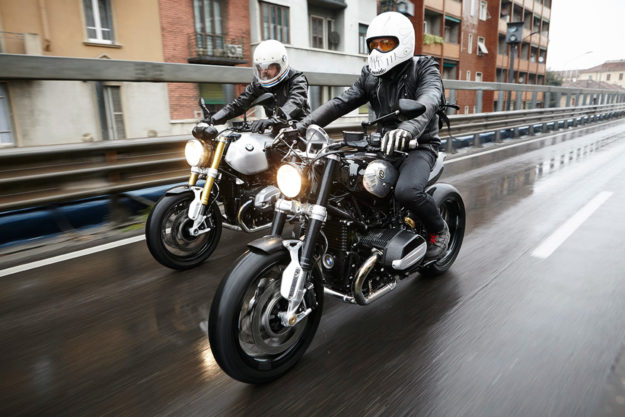
The bike retains its factory built frame, but the build team has replaced nearly everything else. Despite that, Giuseppe says the bike still retains the hidden modern tech the R nineT left the BMW Motorrad factory with.
“The bike was conceived as a show piece, but retains all the safety, reliability and street-ability of the original,” he says.
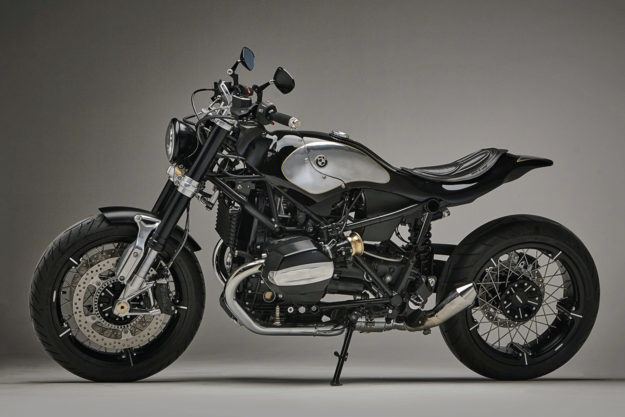
“We kept the stock exhaust with the lambda sensors and butterflies, adding a short, upswept and handmade megaphone.
“We lost a little power after eliminating the factory airbox, but the bike is still very easy, smooth, and fun to ride. It feels and looks lighter than stock; we shed at least 25 kilograms [55 pounds].”
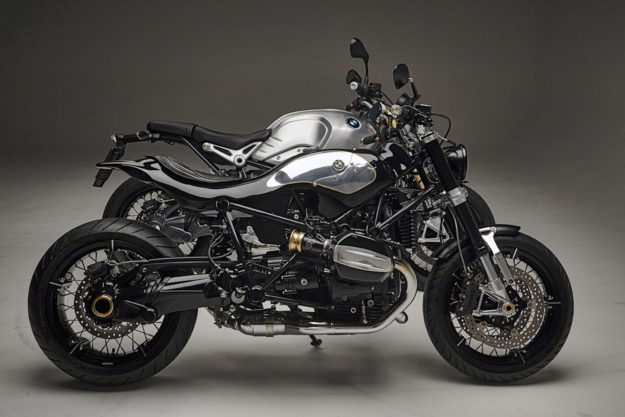
The result is an R nineT that has been dramatically slimmed down, to the point that its silhouette more closely resembles a dirt tracker or trials bike. Yet somehow it still looks every bit an R-series Beemer.
Giuseppe and the team at Radikal Chopper were responsible for the overall design of the bike. The bodywork was done by Metalbike Garage.
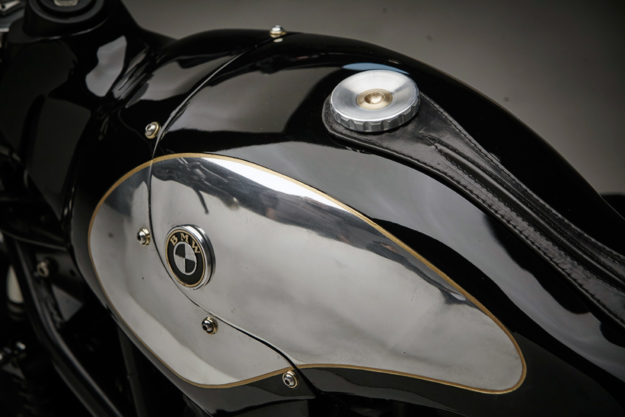
Eliminating the airbox allowed the builders to fabricate a bolt-on monocoque that connected directly to standard docking points. This also removed the need for the factory subframe bracing, as the monocoque by its inherent properties is self-supporting.
The aluminum bodywork was all hand formed and is a complete one-off. There were no molds, and the final product is a testament to the amazing skills of Metalbike Garage. The aluminum was then polished and partially painted, before being finished off with gold pin striping and brass cast BMW emblems.

Amazingly, the factory wiring harness remains intact; the only modification is to the turn signal cabling. The seat is detachable, revealing the battery box and battery, so the bike’s as functional as the day it left the factory.
Even the liquid crystal display—which is perched atop a set of custom risers machined by FG Racing—still retains the same functionality as the original clocks, but with a far more fit-for-racing aesthetic.
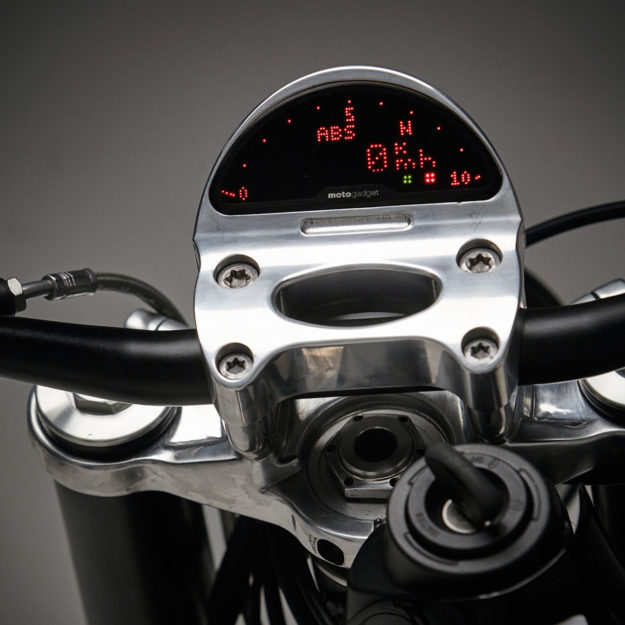
Built into the monocoque is a hand formed fuel tank, which is less than half the stock width and emphasizes the BMW boxer twin in a way the original bike could not.
The engine looks the part too, thanks to Rizoma head and alternator covers. Rizoma also supplied the rearsets, mirrors, blinkers, master cylinder covers and reservoir.
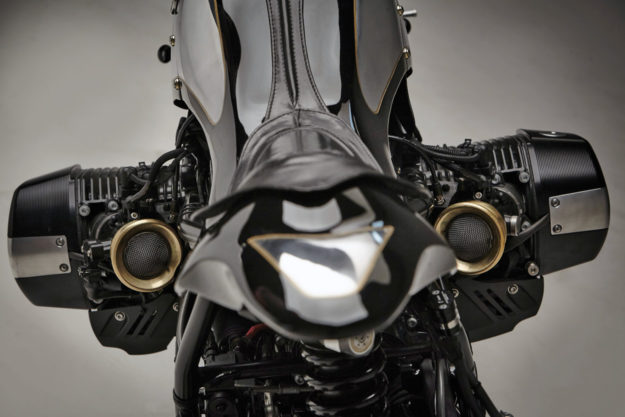
The story could quite easily stop at that point, but there’s more. When LowRide’s vision was unveiled a year ago at a BMW event at Monza, it caught the eye of BMW’s top brass. Soon after, it was shipped to Milan for the huge EICMA show—making it the only custom R nineT on the BMW Motorrad stand.
Guiseppe was then introduced to the renowned German tuner Edelweiss Motorsport. And that’s where things really ramped up a gear. Edelweiss work mostly on air-cooled boxers of the BMW and Porsche varieties, so they know a thing or two about extracting performance from flat engines.
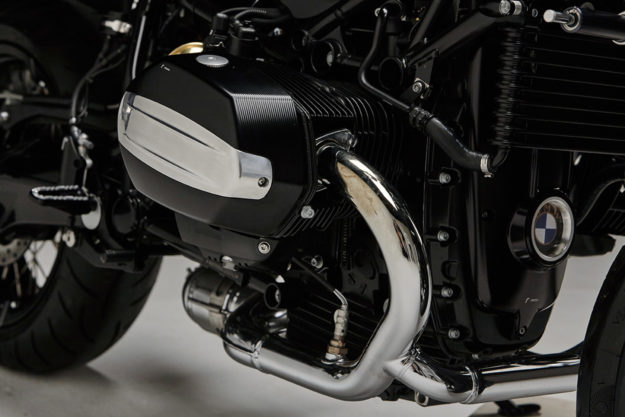
They took the 1200cc boxer twin of the R nineT and hit it with bored out cylinders and forged Pistal pistons. They also increased the compression ratio, gas flowed the heads, and threw in different camshafts and longer inlet funnels.
Then they revised the mapping, and installed a handmade exhaust with a larger pipe diameter to increase flow. (We’re told the sound from the HP Corse hydro formed megaphones is glorious and angry.)
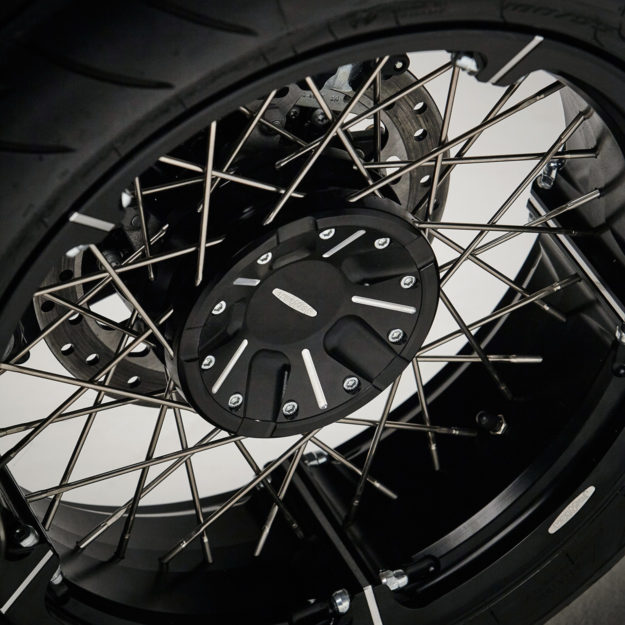
On the dyno the bike showed around 130 hp—a tasty increase of 20 over the original.
That power is now transferred to the ground via Jonich machined billet rims, which start life as five different sections held together by bolts. They’re then subjected to a resin treatment and baked for three days in an oven—which allows them to make use of tubeless tires, with special hubs hiding the air valves. With spokes laced up neatly to the hubs, the look is a beguiling blend of factory and custom.
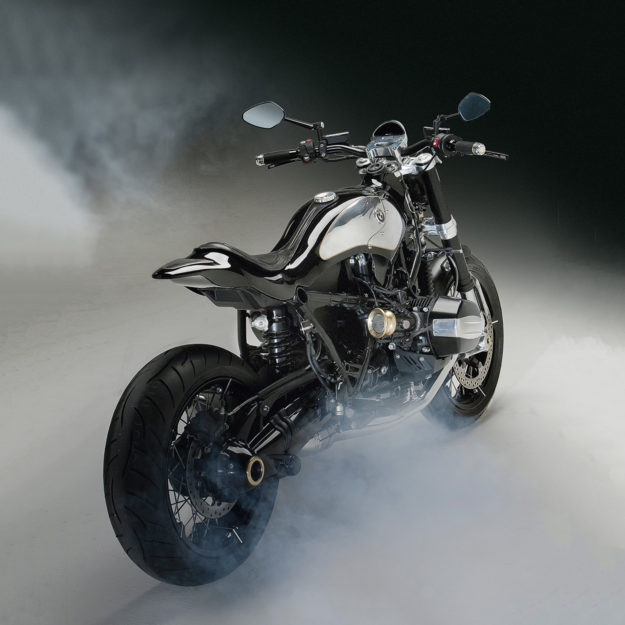
“After the tuning, and fitting a drag racing rear tire, it was pretty quick,” Giuseppe says. “Very loud and fast. Sprinting was fun.”
In the Essenza sprint races, the bike even outperformed a turbocharged BMW. But after a few passes, it was eventually eliminated by a Moto Guzzi running nitrous, which Giuseppe thinks was probably the fastest bike on the day.
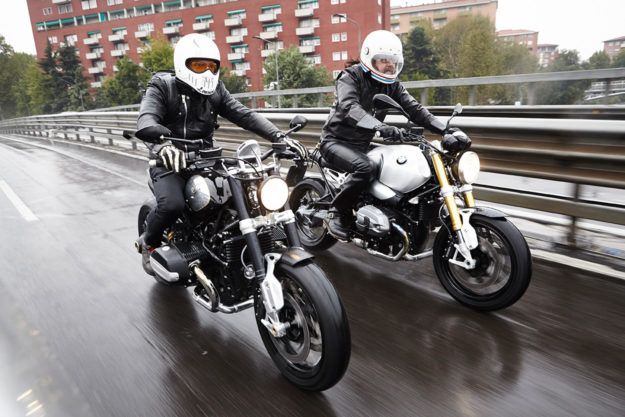
But that doesn’t take away from the style and beauty of this R nineT. It’s a fascinating, performance-driven rework of BMW’s hugely successful ‘heritage’ model—and we’re pretty sure BMW’s design team would give a big tick to Giuseppe and his dedicated artisans.
